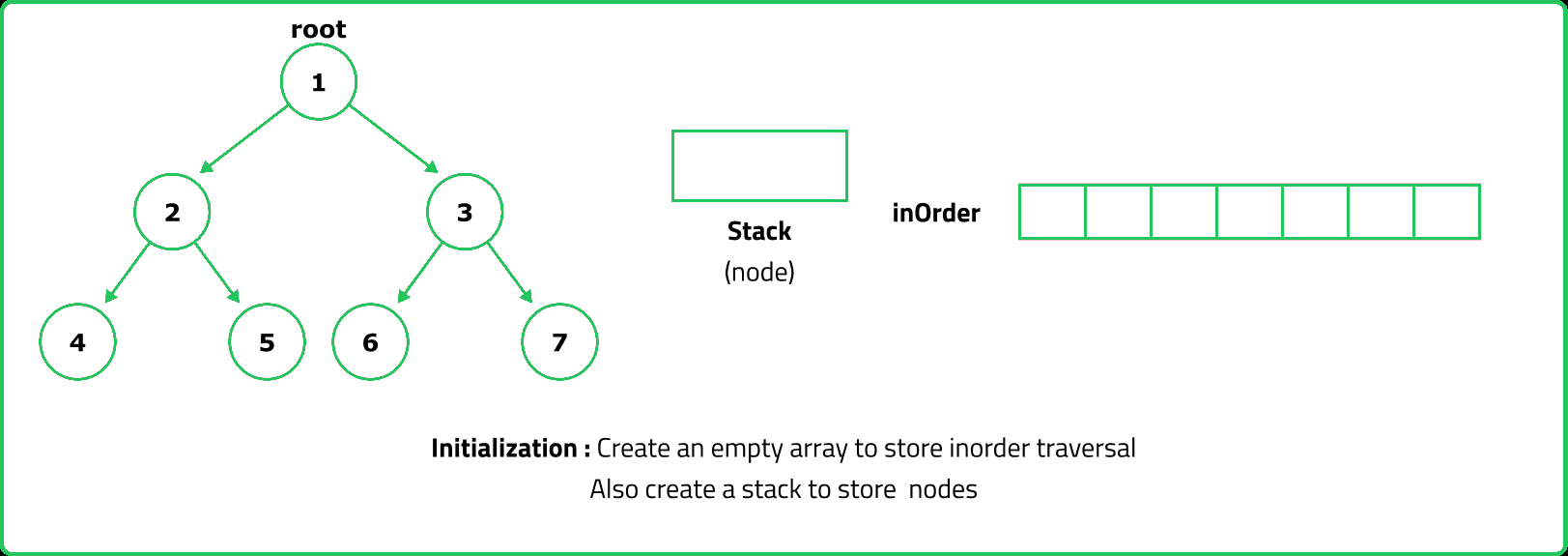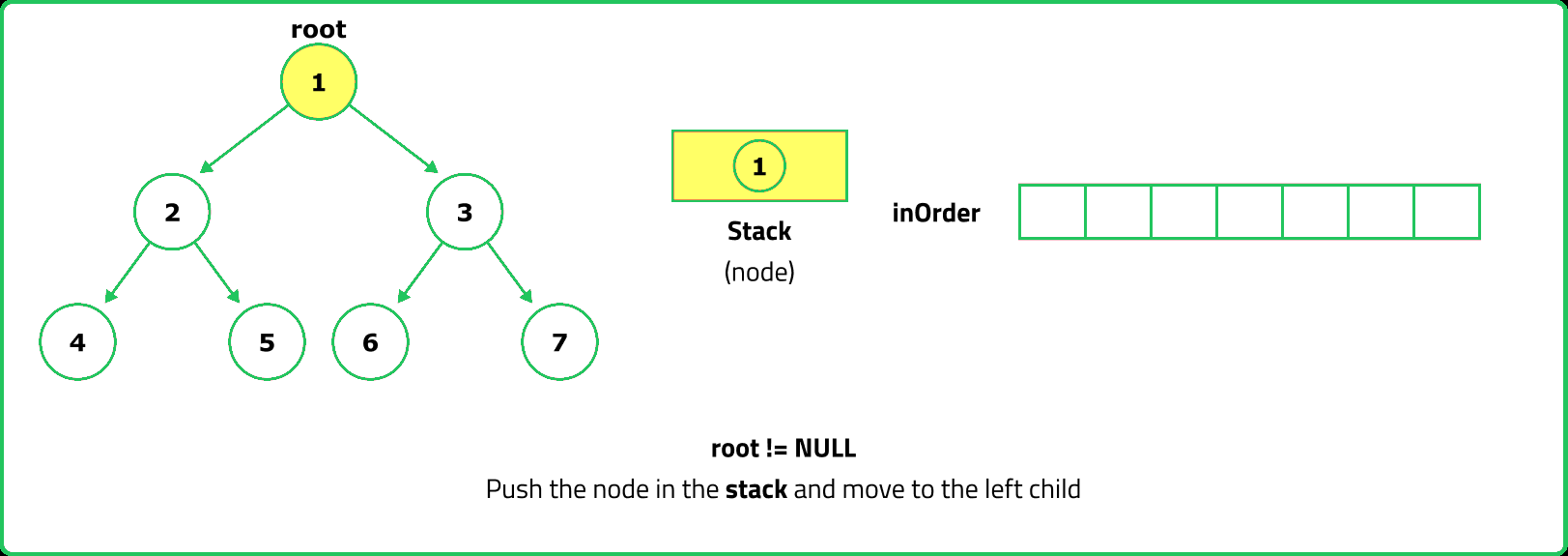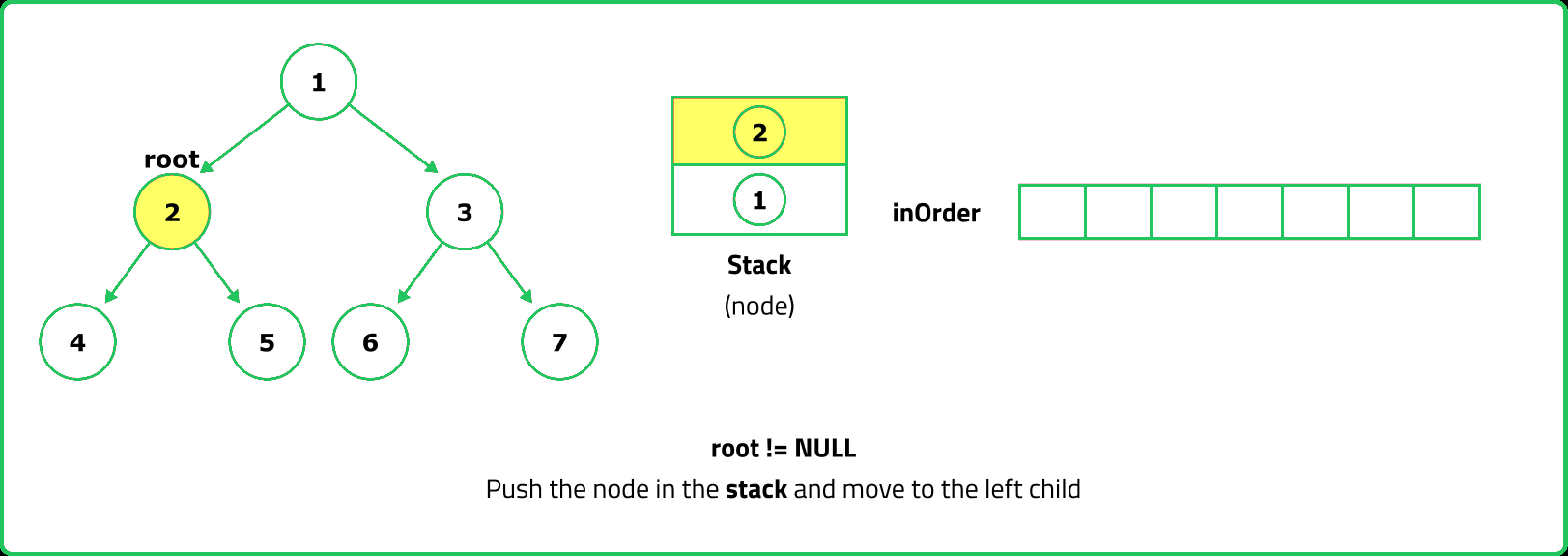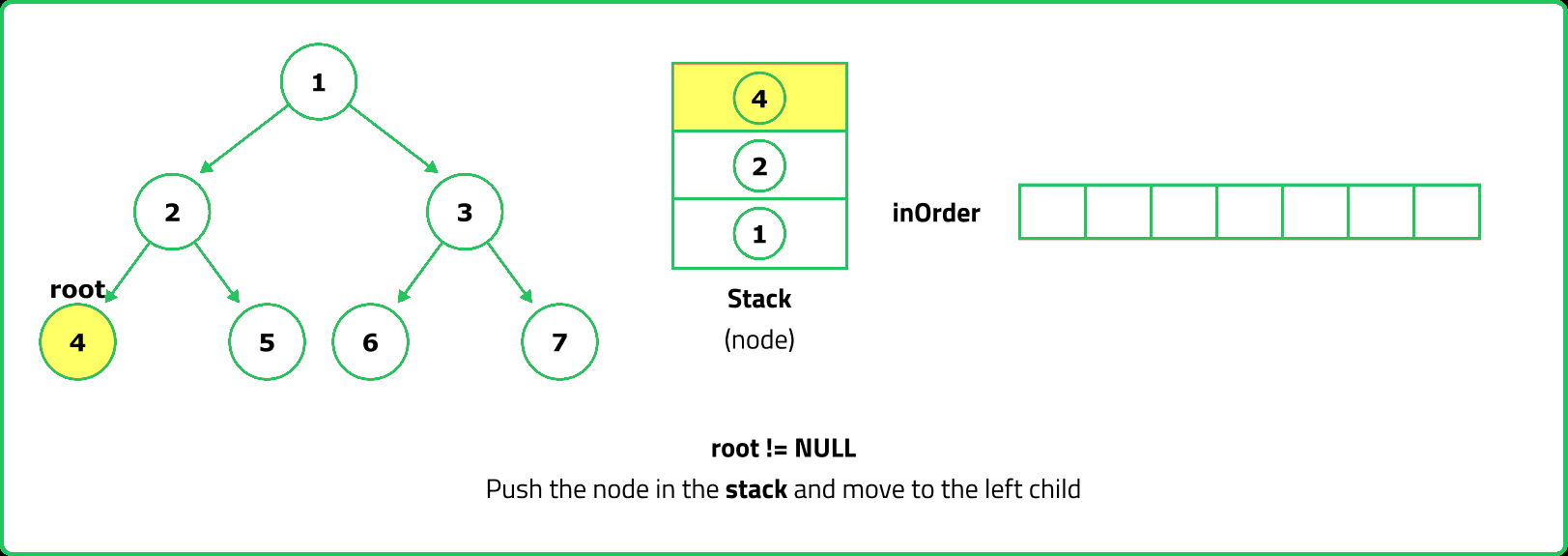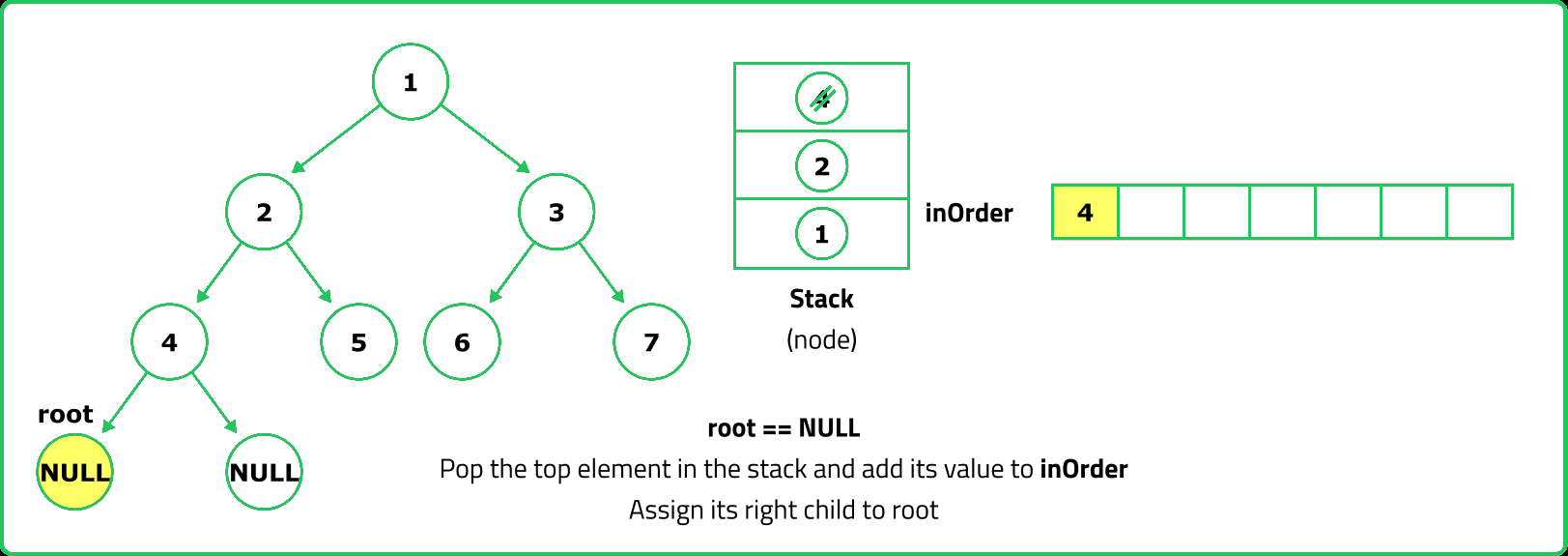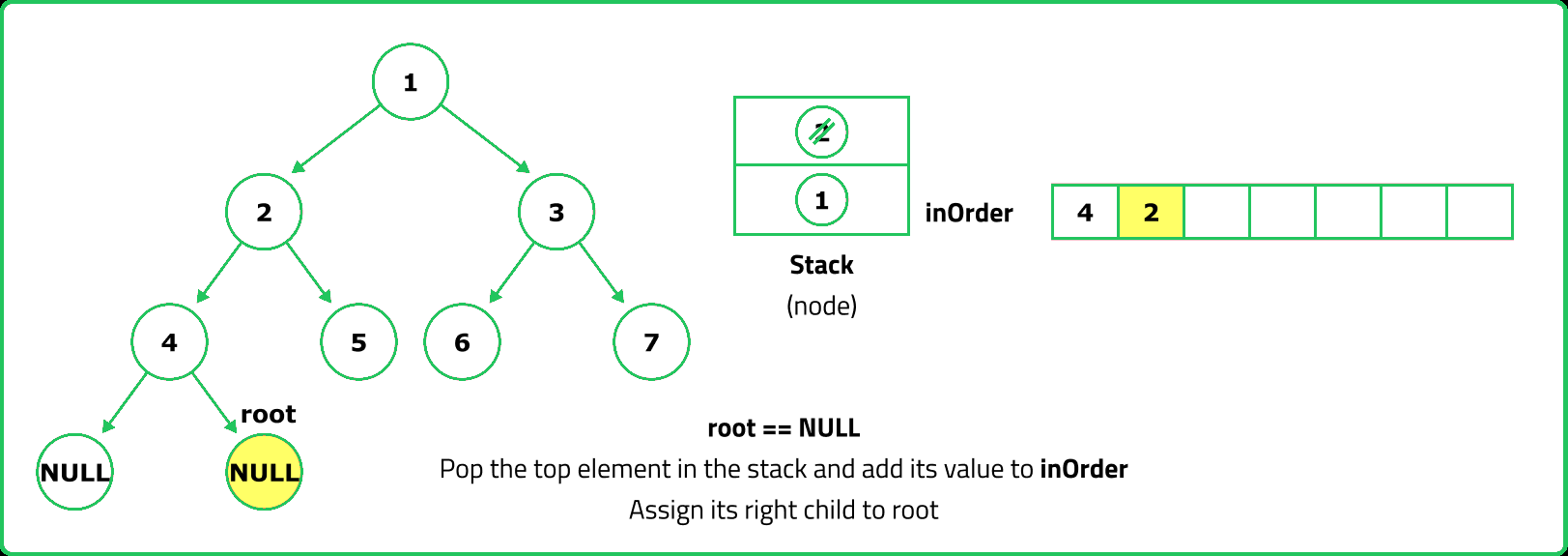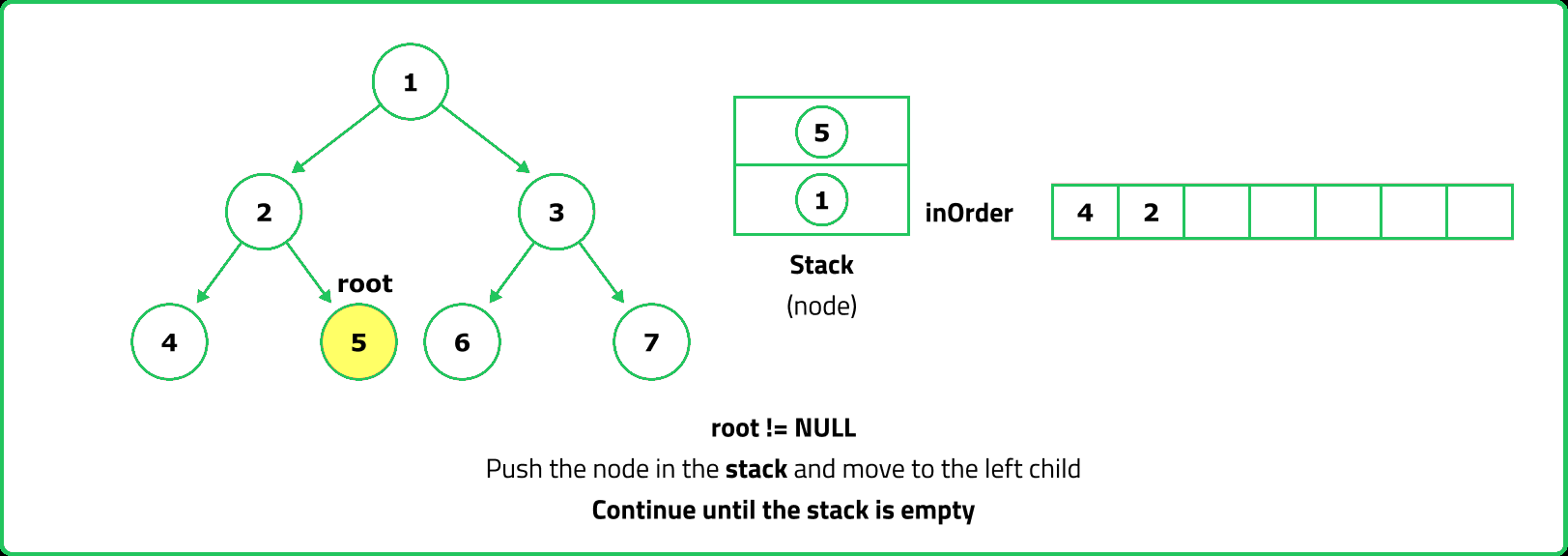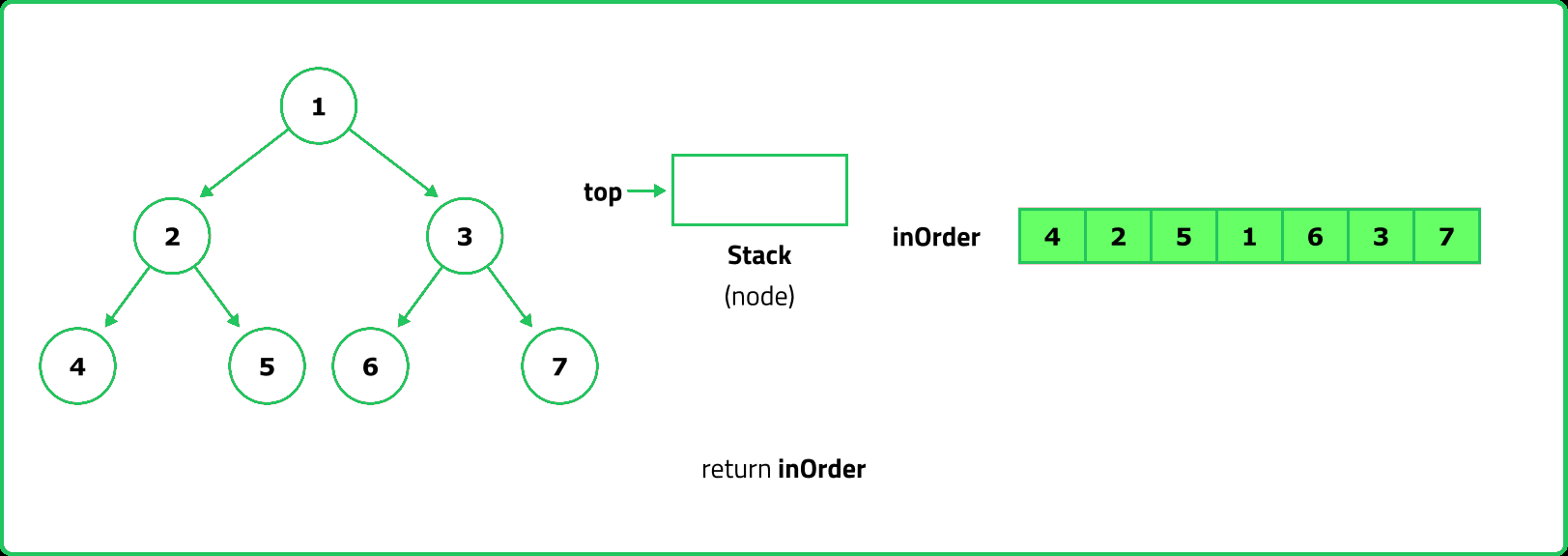Inorder Traversal
Binary Trees
Theory/Traversals
Easy
- Fun Fact: The Inorder traversal of a binary tree is commonly used in software development to process and manage hierarchical data structures, such as the Document Object Model (DOM) in web development
- The DOM represents a web page so programs can change the document structure, style, and content
- By using Inorder traversal, developers can efficiently access and manipulate elements on the webpage in the exact order they appear in the HTML markup, allowing for specific and efficient modifications to web content
Given root of binary tree, return the Inorder traversal of the binary tree.
Examples:
Input : root = [1, 4, null, 4, 2]
Output : [4, 4, 2, 1]
Explanation :
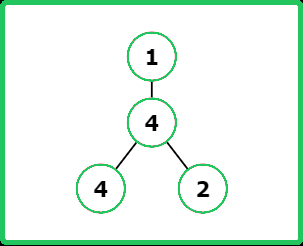
Input : root = [1, null, 2, 3]
Output : [1, 3, 2]
Explanation :
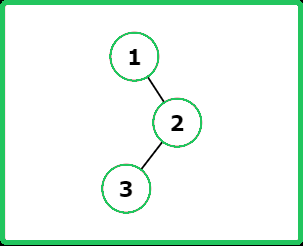
Input : root = [5, 1, 2, 8, null, 4, 5, null, 6]
Constraints
- 1 <= Number of Nodes <= 100
- -100 Node.val <= 100
Hints
- Since inorder traversal first visits the left subtree, we use a stack to store nodes while traversing left.
- Push nodes onto the stack while moving left, process them, then move to their right child.
Company Tags
Broadcom
ARM
Seagate Technology
Rockstar Games
Freshworks
Johnson & Johnson
PayPal
HashiCorp
Medtronic
Goldman Sachs
Epic Games
Flipkart
Wayfair
Snowflake
Intel
AMD
Morgan Stanley
Uber
Airbnb
Target
Swiggy
MongoDB
Boston Consulting Group
Reddit
Bloomberg
Google
Microsoft
Amazon
Meta
Apple
Netflix
Adobe

